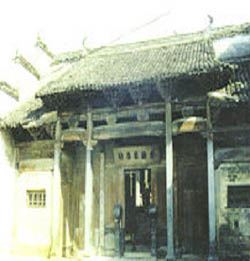1) experience of vernacular architecture


民居经验
1.
Based on the definition of vernacular architecture given inGuangxi Vernacular Architecture, this article clears up the content of the book introductory, and summarizes the experience of vernacular architecture gained in the research on Guangxi vernacular architecture.
以《广西民居》中的“民居”定义对全书的内容进行了介绍性梳理,并对其在广西民居研究过程中所获得的民居经验进行了归纳总结。
2) The experience of homes


居室经验
3) colonial experience


殖民经验
1.
In current prevalent historical narrative,the colonial experience in Shanghai has been forgotten both consciously and unconsciously,and we can no longer use "imperialist invasion",a simple cliché,to describe it.
在目前流行的历史叙述中,上海的“殖民经验”被有意无意地改写、忽略和遗忘。
4) the minority experience


民族经验
1.
This thesis according to the characteristics of the ethnic minorities in Guangxi having only language but text, view through folk songs and folk tales, explores the minority experience of modern Chinese poetry to construct.
本文根据广西各少数民族虽有民族语言,却无文字的特点,从口传文学的角度出发,通过山歌和民间故事,探讨广西现代汉语诗歌民族经验的构建。
5) shopkeepers and residents attitudes


经营者居民态度
6) residential economic sovereignty


居民经济主权
1.
The article states the connotation and the effect of the residential economic sovereign and analyses the relationship between the residential economic sovereignty and the economic growth in China with some examples.
本文提出并论证了居民经济主权的内涵和作用,实证分析了我国居民经济主权与经济增长的关系。
补充资料:安徽民居
安徽民居其布局一般都以三合院或四合院为基本单位,但宏观世界与北京的院落形式有别。根据当地气候、地 形的特点,安徽传统的民居建筑多为各种造型的二层楼房,有的依山傍水,有的参差起伏,有的层楼叠院,精致朴素、堂皇俊秀。
形的特点,安徽传统的民居建筑多为各种造型的二层楼房,有的依山傍水,有的参差起伏,有的层楼叠院,精致朴素、堂皇俊秀。
安徽民居代表西递村简介
西递村位于安徽省黄山市黟县东南部,四面环山,两条溪流从村北、村东经过村落在村南会源桥汇聚。现存明、清古民居124幢,祠堂3幢。2000年11月30日,被联合国教科文组织列入世界文化遗产名录。
西递村是一处以宗族血缘关系为纽带,胡姓聚族而居的古村落,该村源于公元11世纪,发展鼎盛于14-19世纪。20世纪初,随着我国封建宗法制度的解体,西递村的发展也日趋缓慢。由于历史上较少受到战乱的侵袭,也未受到经济发展的冲击,村落原始形态保存完好,保持着历史发展的真实性和完整性。 
西递村以一条纵向的街道和两条沿溪的道路为主要骨架,构成东向为主、向南北延伸的村落街巷系统。所有街巷均以黟县青石铺地,古建筑为木结构、砖墙维护,木雕、石雕、砖雕丰富多彩,巷道、溪流、建筑布局相宜。村落空间变化韵味有致,建筑色调朴素淡雅,体现了皖南古村落人居环境营造方面的杰出才能和成就,具有很高的历史、艺术价值。西递的石、砖、木三雕,堪称西递三绝。